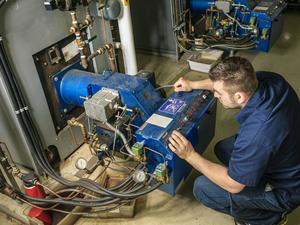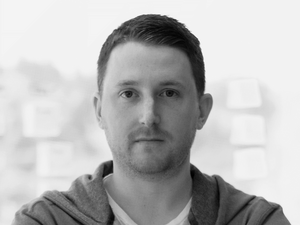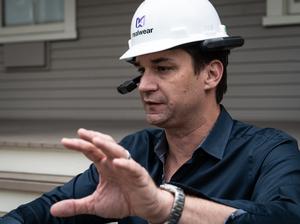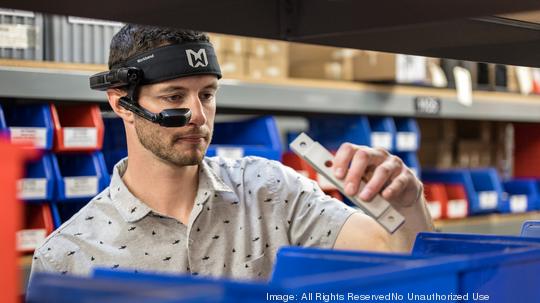
Vancouver wearable computer maker RealWear unveiled the next generation of its head-mounted system designed for frontline industrial workers.
It’s a major upgrade of the product that was first introduced in 2017 and incorporates feedback from its more than 5,000 global industrial customers.
The new product is called RealWear Navigator 500 and is a slimmer, lighter more powerful version of its existing HMT-1 product. With RealWear’s product, workers can easily capture or find information in real-time and collaborate with remote colleagues. This means someone working on a factory floor, or offshore oil rig or other industrial site, could collaborate with an expert on a piece of equipment who is located somewhere else.
CEO Andrew Chrostowski described the new product is as “the next big step in the evolution of frontline workers.”
As companies grapple with the realities of adopting more automation and the increasing lack of skilled labor, Chrostowski wants RealWear’s technology to offer a “human-centric” solution.
“People will remain the nexus of control and if we can be a knowledge transmission platform and allow them to be more engaged with peers and customers (it will) elevate performance,” he said.

RealWear’s product is in an area the company calls “assisted reality.” Unlike virtual reality or even augmented reality, the real world is front and center to the wearer of the device and both hands are free. This is important because RealWear customers are in environments and around equipment that require full attention for safety.
The new product is rugged, completely hands-free and the hardware is modular so batteries and cameras can be swapped in an out. The company also has 200 applications in its ecosystem from partners like Microsoft Teams, Zoom and Webex Expert on Demand.
This new generation of product has been in development for more than two years. The company has 56,000 units of its products already shipped and is used by 41 or the Forbes 100 companies. Customers include Shell, Colgate-Palmolive and Goodyear.
The company doesn’t release revenue but Chrostowski said it tripled sales in 2020. This year, the company focused on maintaining position and transitioning the product to Navigator 500.
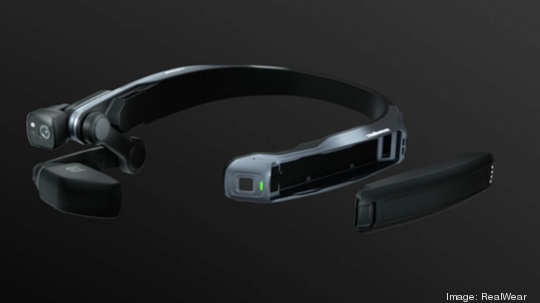
“(2021) was a transition year for us as we have seen what is happening in this post-covid world,” he said, adding that now that remote and hybrid work are a more long-term reality than short-term blip, companies are digging in on finding systems of record and expanding workflows.
To date the company has raised $75 million from investors. Chrostowski wants to expand the moat, or the advantage, that RealWear has against competitors. As a result, he is open to taking additional growth capital to further accelerate the product roadmap.
The company has 118 employees. Its headquarters is in the Fort Vancouver development. Chrostowski plans to hire significantly in 2022. However, the company has embraced its own hybrid work model and doesn’t expect to need any more office space, despite hiring plans.
In addition to getting the Navigator 500 into more customers, the company is developing ways to use the data captured by its hardware so customers can make better decisions.
“Services will be more meaningful (next year),” he said. “There is alignment from use (of the product) and greater insights into (customer) operations and how we can create value together. It’s the real beginning of device, data and decision making.”
